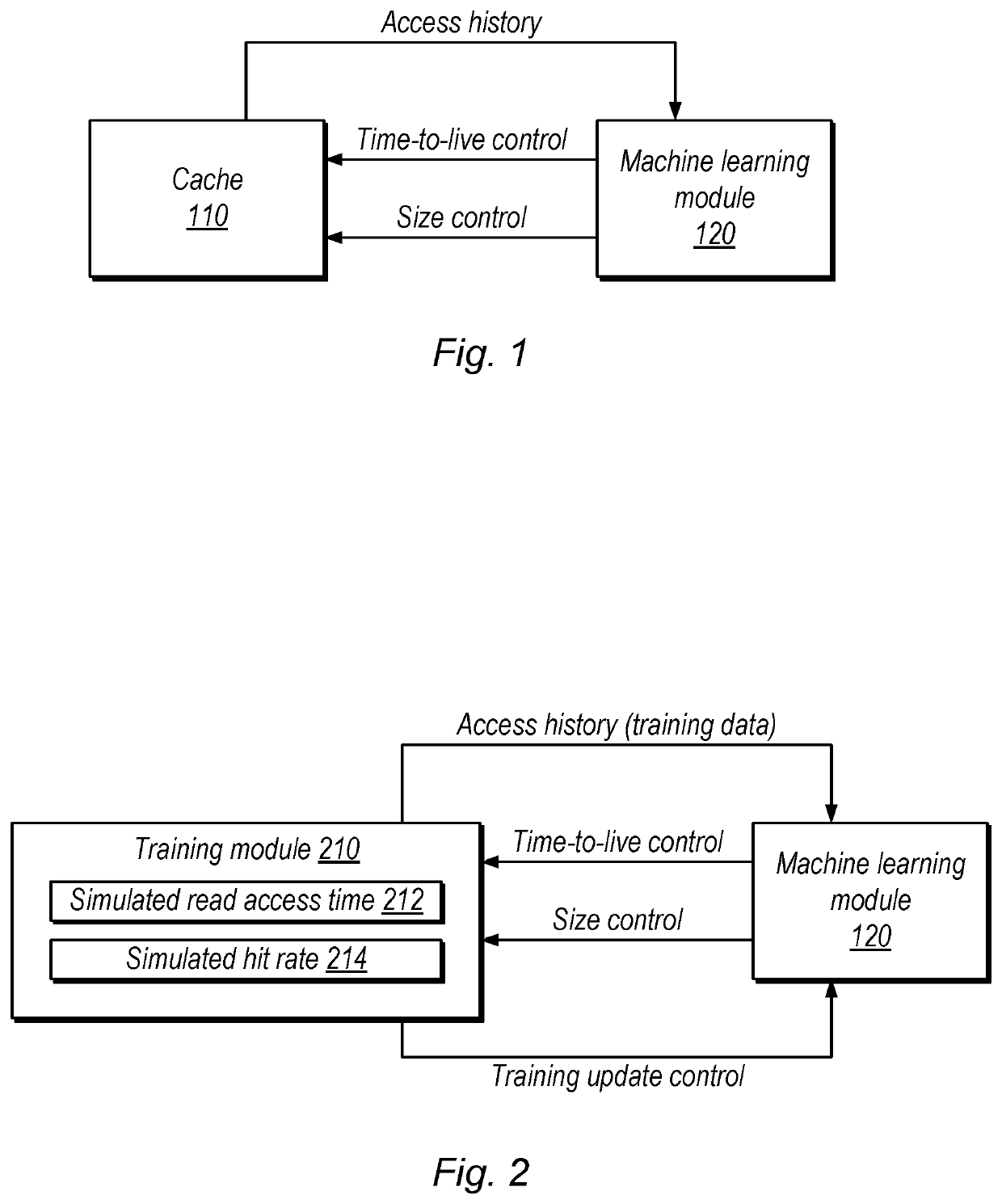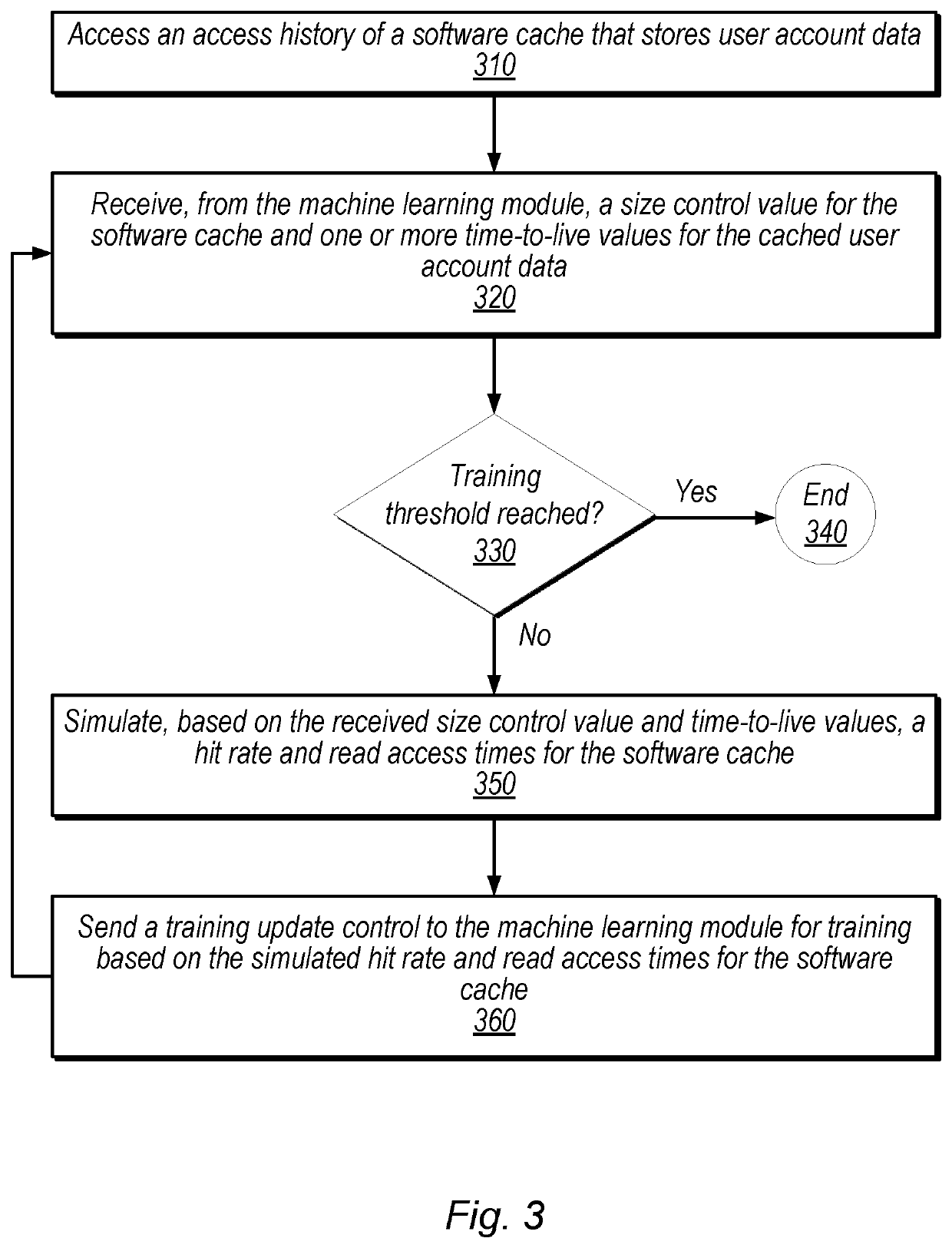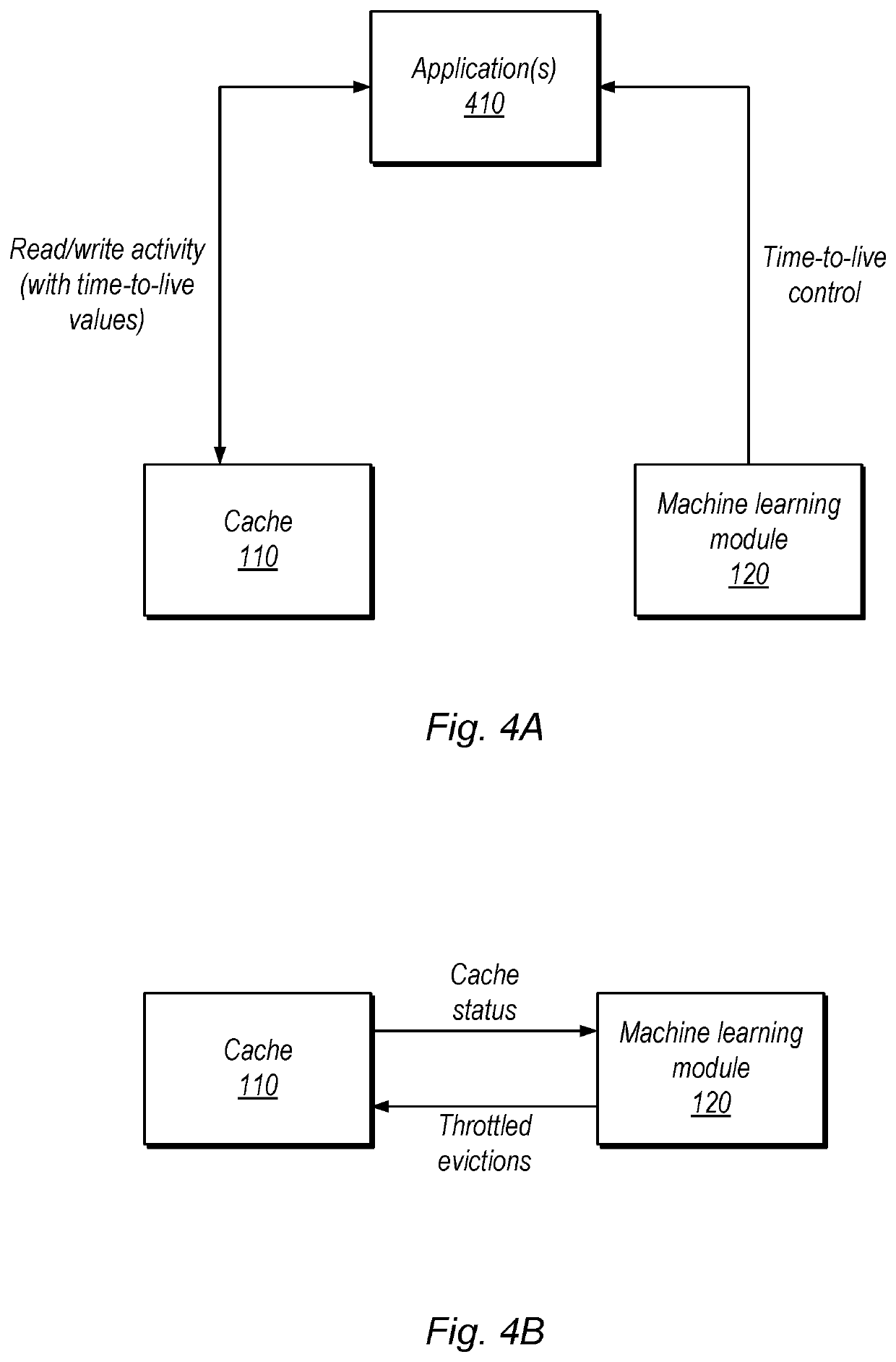Controlling Cache Size and Priority Using Machine Learning Techniques
a machine learning and cache technology, applied in the field of cache technology, can solve the problems of reduced hit rate, substantial delays, and longer access time of large caches
- Summary
- Abstract
- Description
- Claims
- Application Information
AI Technical Summary
Benefits of technology
Problems solved by technology
Method used
Image
Examples
example training
Module
[0026]FIG. 2 is a diagram illustrating example training of a machine learning module using cache access history as training data, according to some embodiments. In the illustrated embodiment, training module 210 trains machine learning module 120 based on simulated read access times 212 and a simulated hit rate 214.
[0027]Machine learning module 120, in the illustrated embodiment, generates one or more time-to-live controls for data stored in cache 110 and a size control for cache 110 based on its current configuration, which may be iteratively modified by training update controls from training module 210. In the illustrated embodiment, module 120 sends the controls to training module 210.
[0028]In the illustrated embodiment, based on the time-to-live and size controls, training module 210 generates simulated read access times 212 and a simulated hit rate 214. For example, training module 210 may use cache accesses that occurred subsequently to the access history input to machin...
example method
[0045]FIG. 6 is a flow diagram illustrating example method for controlling cache size and priority using machine learning techniques, according to some embodiments. The method shown in FIG. 6 may be used in conjunction with any of the computer circuitry, systems, devices, elements, or components disclosed herein, among other devices. In various embodiments, some of the method elements shown may be performed concurrently, in a different order than shown, or may be omitted. Additional method elements may also be performed as desired.
[0046]At 610, in the illustrated embodiment, a software cache that is implemented using one or more hardware storage elements caches data for a plurality of different user accounts.
[0047]At 620, in the illustrated embodiment, a machine learning module generates a control value that specifies a size of the cache and generates time-to-live values for entries in the cache, based on access patterns to the cache. In some embodiments, a training module trains th...
PUM
 Login to View More
Login to View More Abstract
Description
Claims
Application Information
 Login to View More
Login to View More - R&D
- Intellectual Property
- Life Sciences
- Materials
- Tech Scout
- Unparalleled Data Quality
- Higher Quality Content
- 60% Fewer Hallucinations
Browse by: Latest US Patents, China's latest patents, Technical Efficacy Thesaurus, Application Domain, Technology Topic, Popular Technical Reports.
© 2025 PatSnap. All rights reserved.Legal|Privacy policy|Modern Slavery Act Transparency Statement|Sitemap|About US| Contact US: help@patsnap.com



